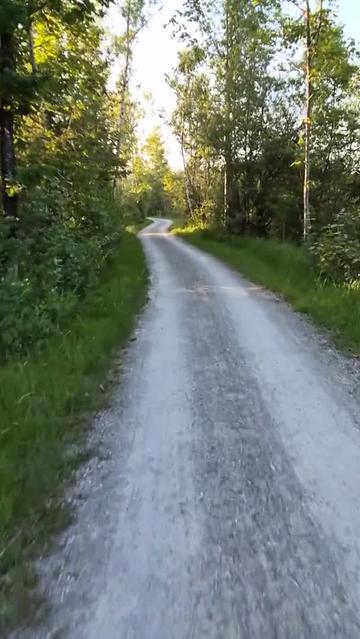2025-06-28 13:30:10
In Ursula K. Le Guin's "A Man of the People" (part of "Four Ways to Forgiveness") there's a scene where the Hainish protagonist begins studying history. It's excellent in many respects, but what stood out the most to me was the softly incomprehensible idea of a people with multiple millions of years of recorded history. As one's mind starts to try to trace out the implications of that, it dawns on you that you can't actually comprehend the concept. Like, you read the sentence & understood all the words, and at first you were able to assemble them into what seemed like a conceptual understanding, but as you started to try to fill out that understating, it began to slip away, until you realized you didn't in fact have the mental capacity to build a full understanding and would have you paper things over with a shallow placeholder instead.
I absolutely love that feeling, as one of the ways in which reading science fiction can stretch the brain, and I connected it to a similar moment in Tsutomu Nihei's BLAME, where the android protagonists need to ride an elevator through the civilization/galaxy-spanning megastructure, and turn themselves off for *millions of years* to wait out the ride.
I'm not sure why exactly these scenes feel more beautifully incomprehensible than your run-of-the-mill "then they traveled at lightspeed for a millennia, leaving all their family behind" scene, other than perhaps the authors approach them without trying to use much metaphor to make them more comprehensible (or they use metaphor to emphasize their incomprehensibility).
Do you have a favorite mind=expanded scene of this nature?
#AmReading
2025-05-26 13:24:56
2025-06-27 08:25:09
Building Lightweight Semantic Segmentation Models for Aerial Images Using Dual Relation Distillation
Minglong Li, Lianlei Shan, Weiqiang Wang, Ke Lv, Bin Luo, Si-Bao Chen
https://arxiv.org/abs/2506.20688
2025-05-26 19:43:13
Join our #Luanti server they said. A few days have passed and I built this. Now what?
Contemplating my life choices.
2025-06-22 19:23:52
A quick video of our #cycling loop today. Enjoy!
https://loops.video/v/954LE8jJtK
2025-06-26 08:17:10
Low-Luminosity Type IIP Supernovae from the Zwicky Transient Facility Census of the Local Universe. II: Lightcurve Analysis
Kaustav K. Das, Mansi M. Kasliwal, Jesper Sollerman, Christoffer Fremling, Takashi J. Moriya, K-Ryan Hinds, Daniel A. Perley, Eric C. Bellm, Tracy X. Chen, Evan P. O'Connor, Michael W. Coughlin, W. V. Jacobson-Galan, Anjasha Gangopadhyay, Matthew Graham, S. R. Kulkarni, Josiah Purdum, Nikhil Sarin, Steve Schulze, Avinash Singh, Daichi Tsuna, Avery Wold
2025-05-21 10:41:19
The photographer of the image I use as a background on Trello, is Alex Knight from Pexels: https://www.pexels.com/photo/people-near-buildings-during-nighttime-with-lights-2816903/
I would love to visit Tokyo... nighttime there looks magical to me.
2025-06-23 11:54:27
Our partners at the NOAA Great Lakes Environmental Research Laboratory have found cyanobacteria microcystin toxins in the western basin of Lake Erie April 28, far earlier this year than ever before. The season starts earlier and lasts longer due to #ClimateChange.
2025-06-22 23:07:06
NASA's #EZIE Mission - Exploring the Northern Lights - Intrepid Museum Astro Live: https://www.youtube.com/watch?v=91PmG7x84Ng (that's the Electrojet Zeeman Imaging Explorer mission, the first to study electric currents in Earth’s upper atmosphere known as auroral electrojets).
2025-06-16 13:43:14
Citizen science illuminates the nature of city lights: #LightPollution








